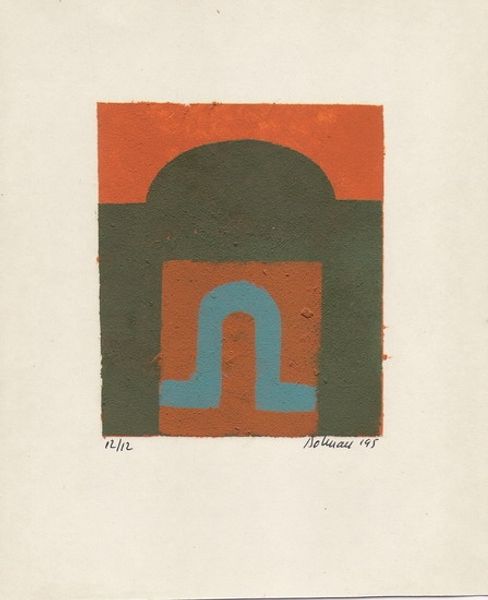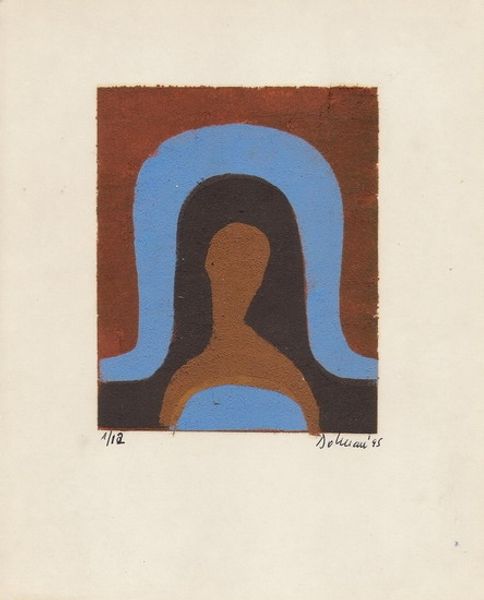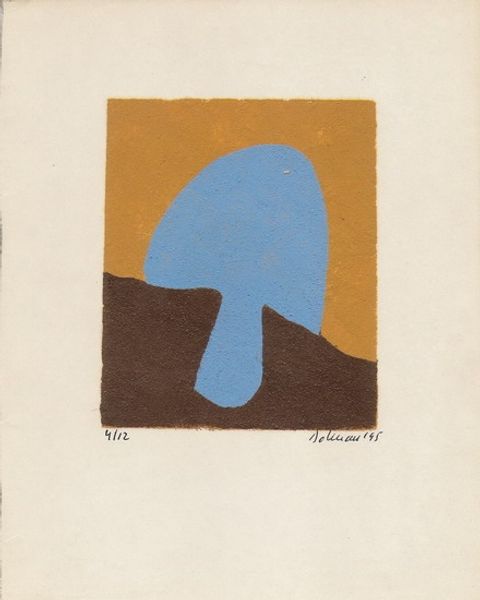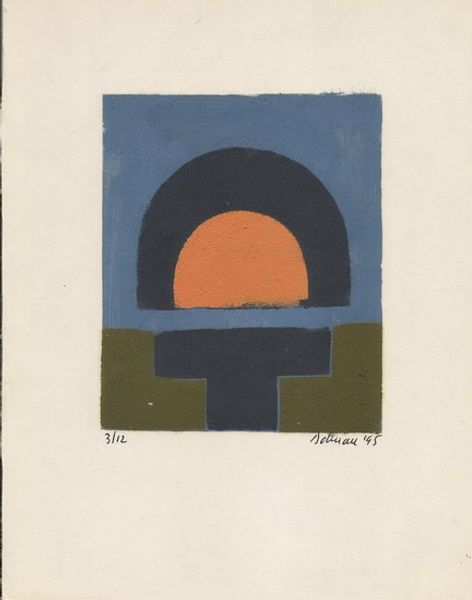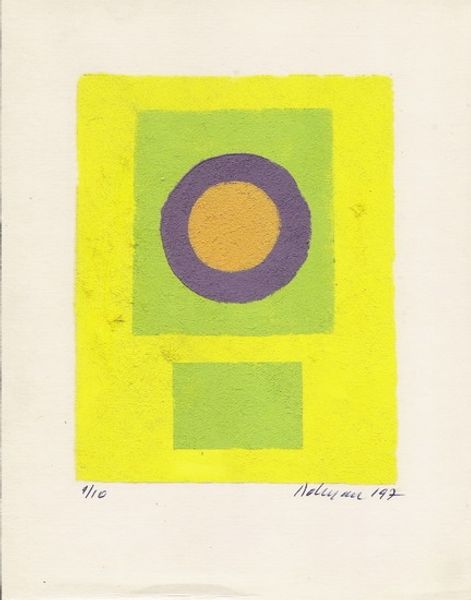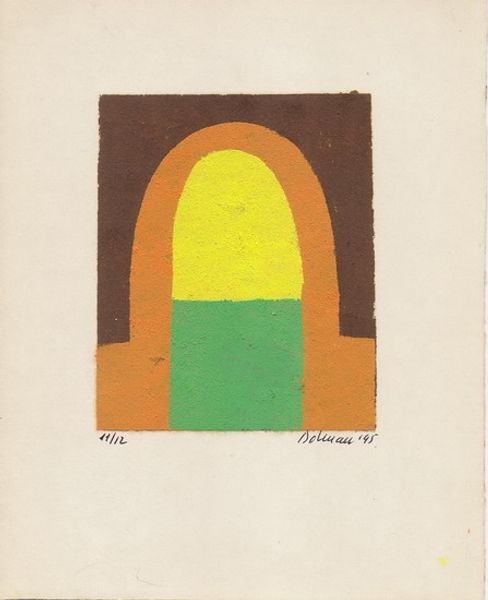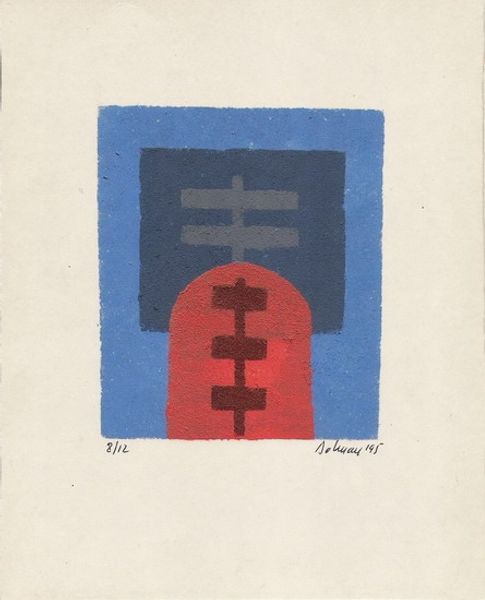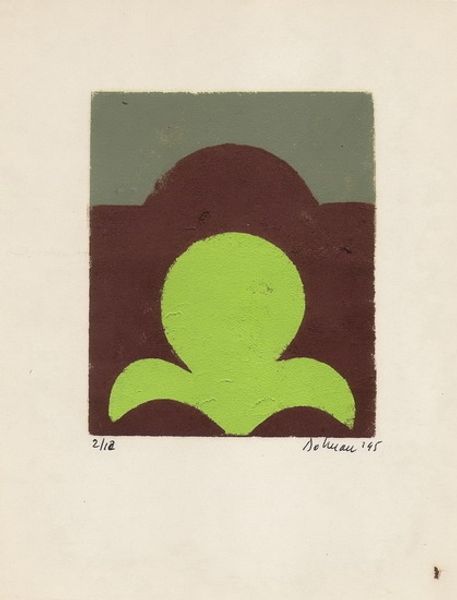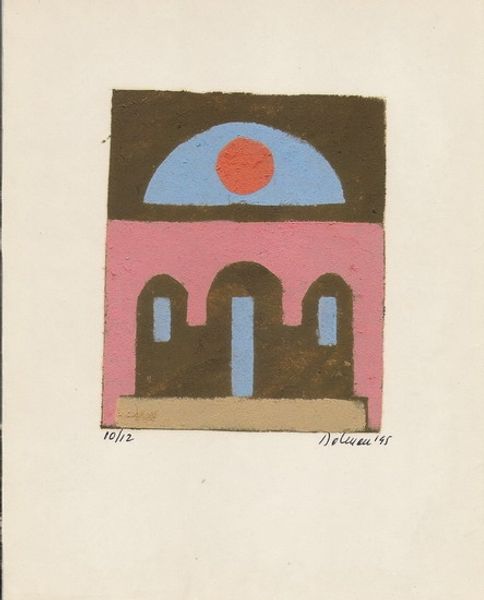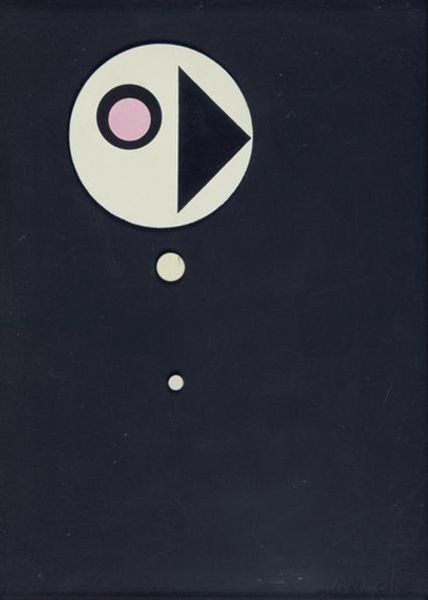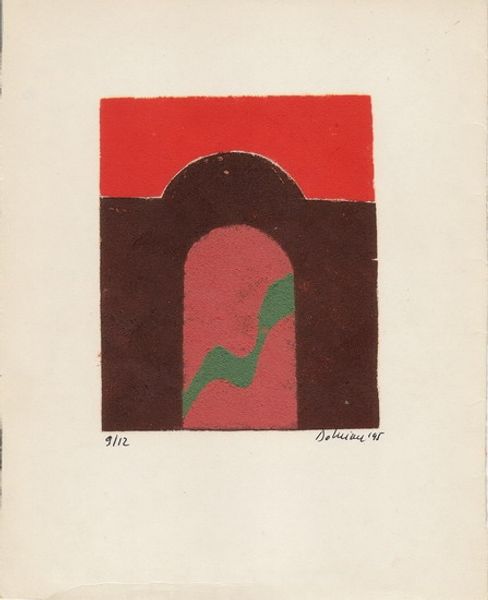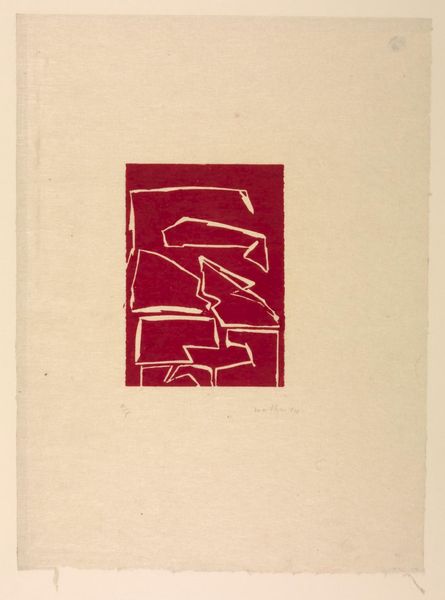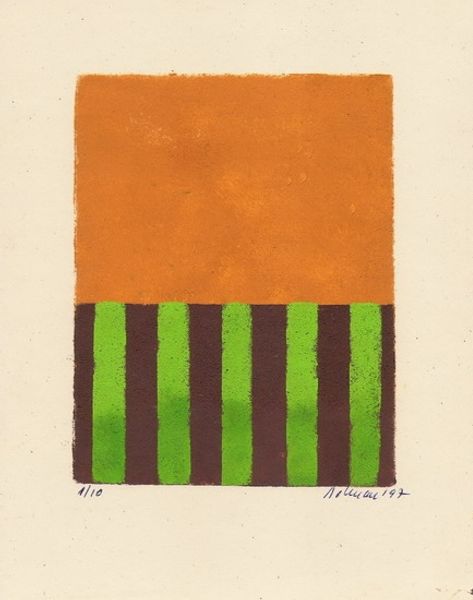
With The Ferocity With Which The Man Is Eating His Shadow (from the Archways series)
0:00
0:00
graphic-art, screenprint, print
#
abstract-expressionism
#
graphic-art
#
non-objective-art
#
screenprint
# print
#
geometric
#
monochrome
Copyright: Vasile Dobrian,Fair Use
Editor: So, here we have "With The Ferocity With Which The Man Is Eating His Shadow," part of the Archways series by Vasile Dobrian, a screenprint. The simple geometric shapes and bold colors—red, blue, and black—are really striking, and yet it's kind of ominous. I'm curious, how do you interpret this work in its historical context? Curator: That's an astute initial response. This piece pulls at the core of abstract expressionism and post-war anxieties. Considering the title, the "man eating his shadow" suggests a self-destructive tendency, a potential commentary on societal consumption and its impact during that period. The sharp, simplified geometric shapes present as non-objective also have a cultural dimension. Do you think it resonates as a reflection of the social structure during its time, when the political imagery dominated? Editor: That's interesting, I hadn't considered it as potentially reflective of socio-political forces. It makes me think about the pressure to conform and the individual's struggle against that. So the bright colours and shapes may convey underlying disquiet? Curator: Precisely. It makes me think, what role did the gallery, as an institution, play in shaping the viewers' understanding of these often-ambiguous works? Consider the audience: Were they ready to embrace non-representational forms and deconstruct them for complex meaning? What impact do you think museums had on shaping or directing how people interpret Abstract Expressionism and its intentions to represent reality? Editor: So, it's not just the artist's intention but also how the art world contextualized it? Curator: Absolutely. Museums curate not only the art but also the narrative around it, creating a framework for reception, even dictating political agendas or acting as subtle government communication to the people. It adds another layer to the piece. The lack of figurative form is arguably a commentary itself on the 'form' and health of societal ideologies and cultures in an era following conflict. Editor: I see, considering the historical landscape changes everything. I’ll have to think more about the interplay between art and the institutions that support it. Curator: Indeed. Examining the art through this lens gives us insights that we otherwise might miss. It shifts our perception.
Comments
No comments
Be the first to comment and join the conversation on the ultimate creative platform.
